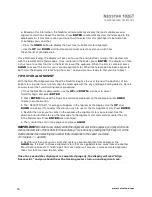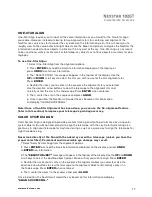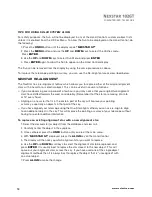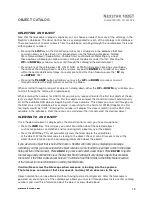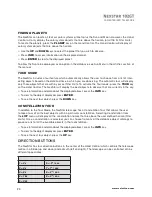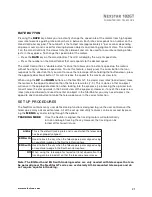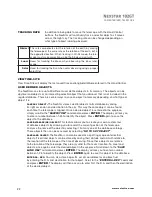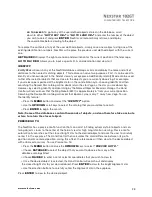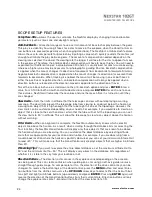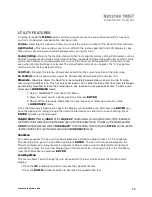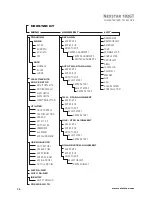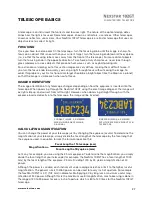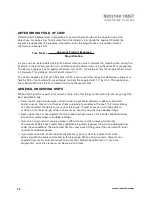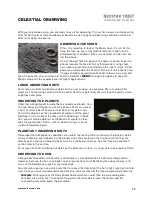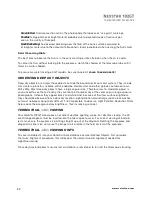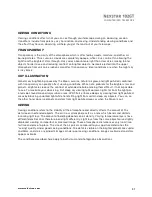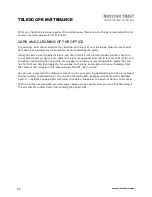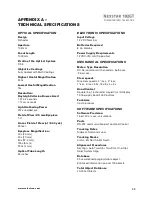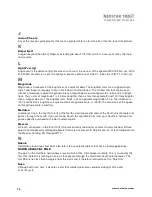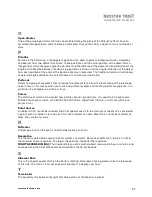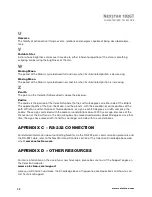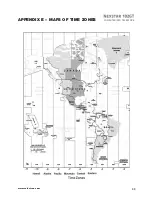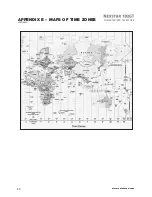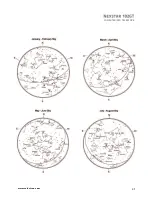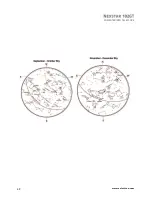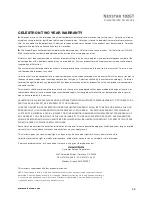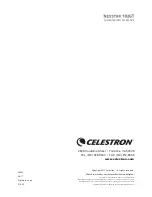
COMPUTERIZED TELESCOPE
With your telescope set up, you are ready to use it for observing. This section covers visual observing
hints for both solar system and deep sky objects as well as general observing conditions which will
affect your ability to observe.
OBSERVING THE MOON
Often, it is tempting to look at the Moon when it is full. At this
time, the face we see is fully illuminated and its light can be
overpowering. In addition, little or no contrast can be seen dur-
ing this phase.
One of the best times to observe the Moon is during its partial
phases (around the time of first or third quarter). Long shad-
ows reveal a great amount of detail on the lunar surface. At low
power you will be able to see most of the lunar disk at one time.
Change to higher power (magnification) to focus in on a smaller
area. Choose the lunar tracking rate from the NexStar’s
MENU
tracking rate options to keep the
Moon centered in the eyepiece even at high magnifications.
LUNAR OBSERVING HINTS
To increase contrast and bring out detail on the lunar surface, use eyepiece filters. A yellow filter
works well at improving contrast while a neutral density or polarizing filter will reduce overall surface
brightness and glare.
OBSERVING THE PLANETS
Other fascinating targets include the five naked eye planets. You
can see Venus go through its lunar-like phases. Mars can reveal
a host of surface detail and one, if not both, of its polar caps.
You will be able to see the cloud belts of Jupiter and the great
Red Spot (if it is visible at the time you are observing). In addi-
tion, you will also be able to see the Moons of Jupiter as they
orbit the giant planet. Saturn, with its beautiful rings, is easily
visible at moderate power.
PLANETARY OBSERVING HINTS
Remember that atmospheric conditions are usually the limiting factor on how much planetary detail
will be visible. So, avoid observing the planets when they are low on the horizon or when they are
directly over a source of radiating heat, such as a rooftop or chimney. See the “Seeing Conditions”
section later in this section.
To increase contrast and bring out detail on the planetary surface, try using Celestron eyepiece filters.
OBSERVING THE SUN
Although overlooked by many amateur astronomers, solar observation is both rewarding and fun.
However, because the Sun is so bright, special precautions must be taken when observing our star
so as not to damage your eyes or your telescope.
For safe solar viewing, use a safe solar filter to reduce the intensity of the Sun’s light, making it safe to
view. Once you have located and focused the Sun, look for some of the following prominent features:
Sunspots
: Dark regions of the Sun’s photosphere which are cooler than the surrounding area.
Sunspots are usually seen to consist of two parts: the inner darker core, the umbra, and the
surrounding less dark region, the penumbra.
CELESTIAL OBSERVING
29
www.celestron.com
Summary of Contents for NexStar 102 GT 102x1000 AZ
Page 2: ...COMPUTERIZED TELESCOPE INSTRUCTION MANUAL ...
Page 40: ...COMPUTERIZED TELESCOPE APPENDIX E MAPS OF TIME ZONES 39 www celestron com ...
Page 41: ...COMPUTERIZED TELESCOPE APPENDIX E MAPS OF TIME ZONES CONTINUED 40 www celestron com ...
Page 42: ...COMPUTERIZED TELESCOPE 41 www celestron com ...


